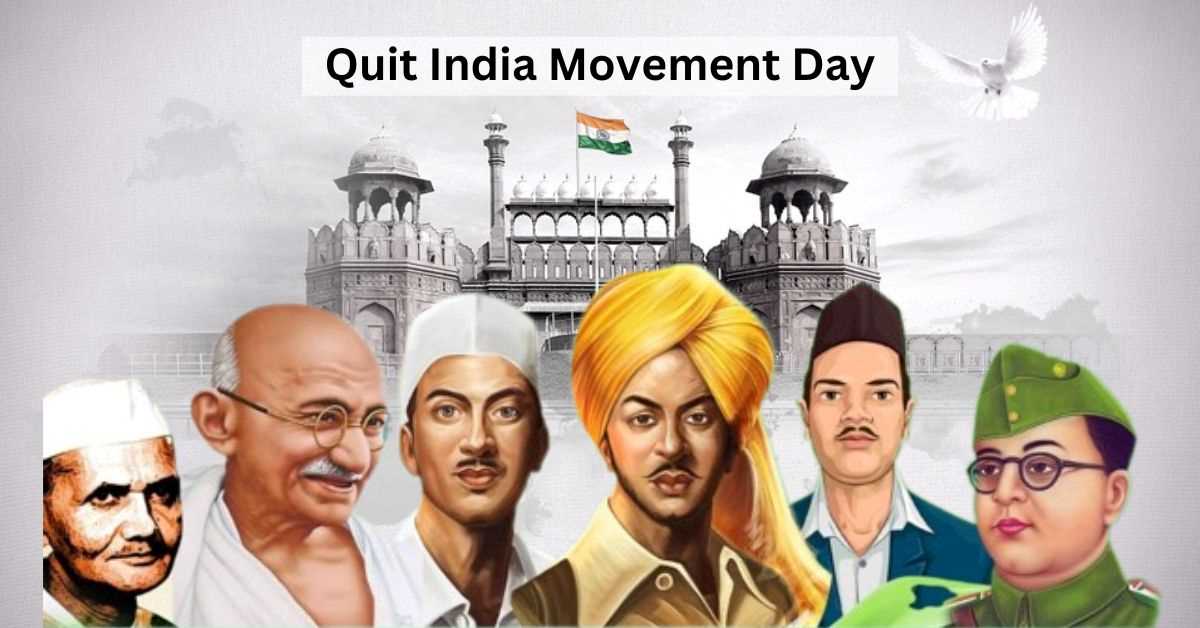The Quit India Movement, also known as the August Movement, was a significant chapter in India’s struggle for independence from British rule. Launched on August 8, 1942, the movement was a call for immediate and complete withdrawal of British forces from India. Spearheaded by the Indian National Congress under the leadership of Mahatma Gandhi, this movement played a crucial role in mobilizing public sentiment and accelerating the path toward independence.
Also Read: RBI increases UPI transaction limit for tax payments to Rs 5 lakh from Rs 1 lakh
Historical Context
By the early 1940s, India was deeply affected by the global turmoil of World War II. The British government’s decision to involve India in the war without consulting Indian leaders led to widespread discontent. The Indian political landscape was also influenced by the failure of the Cripps Mission in March 1942, which had sought to secure Indian cooperation in the war effort by offering limited self-government. The mission’s failure intensified the demand for complete independence.
Also Read: RBI MPC keeps repo rate unchanged at 6.5%
Launch of the Movement
The Quit India Movement was officially launched at the Bombay session of the All India Congress Committee on August 8, 1942. Mahatma Gandhi, along with other prominent leaders like Jawaharlal Nehru, Sardar Patel, and Maulana Azad, presented a resolution calling for the British to “Quit India” and grant the country full independence. Gandhi’s call for immediate action was encapsulated in the slogan “Do or Die,” reflecting the urgency and determination of the movement.
Also Read: अनुशासन तोड़ने के आरोप में अंतिम पंघाल को ओलंपिक विलेज से किया गया बाहर
Nature and Spread of the Movement
The movement quickly spread across the country, with massive demonstrations, strikes, and protests. The Indian masses, influenced by Gandhi’s appeal, took to the streets, demanding an end to British rule. However, the British authorities responded with swift and severe repression. The government arrested thousands of leaders, including Gandhi, Nehru, and Patel, and banned the Indian National Congress.
The movement saw significant popular participation, with students, workers, and peasants joining in. The protests were marked by acts of civil disobedience and non-cooperation, including the burning of British goods and the refusal to pay taxes.
Also Read: Vinesh Phogat becomes first Indian woman wrestler to enter Olympics final
Repression and Suppression
The British government’s response to the Quit India Movement was characterized by widespread arrests, police brutality, and military action. The government aimed to crush the movement by detaining leaders and suppressing public protests. The brutal crackdown led to violence in many parts of India, with reports of police firing on unarmed protesters and the destruction of property.
The movement, while demonstrating the strong desire for independence among Indians, also faced challenges such as lack of central coordination and the severe repression by British forces.
Also Read: India’s Weaving Legacy on National Handloom Day
Impact and Legacy
Despite the harsh repression, the Quit India Movement marked a turning point in the Indian independence struggle. It demonstrated the growing unity among Indians across regions and communities in the fight against colonial rule. The movement laid the groundwork for future political actions and helped galvanize the Indian population for the final push toward independence.
The Quit India Movement also highlighted the limitations of the British colonial regime and made it clear that British control over India was increasingly untenable. The British government, grappling with the pressures of World War II and the rising tide of Indian nationalism, began to reconsider its position in India.
Also Read: मनु भाकर 2 मेडल जीतकर देश लौटीं, दिल्ली एयरपोर्ट पर जोरदार स्वागत
Conclusion
The Quit India Movement remains a landmark event in India’s history. It was a powerful assertion of the Indian people’s desire for self-rule and a clear demonstration of their readiness to endure hardships for the cause of freedom. The movement’s legacy is remembered as a crucial step towards the eventual achievement of independence in 1947. It represents the spirit of defiance and determination that characterized India’s struggle for freedom and continues to inspire generations in the quest for justice and liberty.











